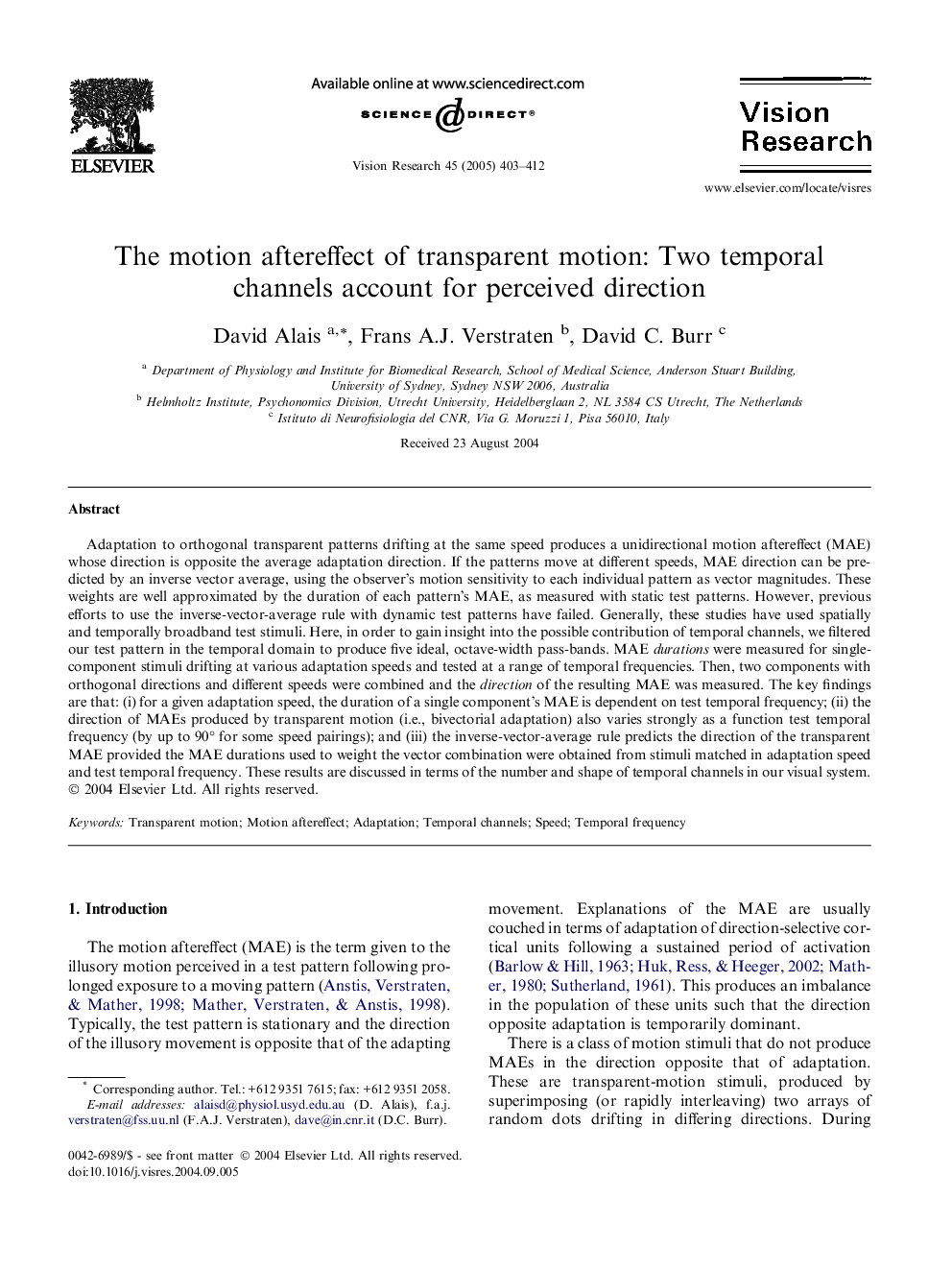| کد مقاله | کد نشریه | سال انتشار | مقاله انگلیسی | نسخه تمام متن |
|---|---|---|---|---|
| 9348704 | 1263623 | 2005 | 10 صفحه PDF | دانلود رایگان |
عنوان انگلیسی مقاله ISI
The motion aftereffect of transparent motion: Two temporal channels account for perceived direction
دانلود مقاله + سفارش ترجمه
دانلود مقاله ISI انگلیسی
رایگان برای ایرانیان
کلمات کلیدی
موضوعات مرتبط
علوم زیستی و بیوفناوری
علم عصب شناسی
سیستم های حسی
پیش نمایش صفحه اول مقاله

چکیده انگلیسی
Adaptation to orthogonal transparent patterns drifting at the same speed produces a unidirectional motion aftereffect (MAE) whose direction is opposite the average adaptation direction. If the patterns move at different speeds, MAE direction can be predicted by an inverse vector average, using the observer's motion sensitivity to each individual pattern as vector magnitudes. These weights are well approximated by the duration of each pattern's MAE, as measured with static test patterns. However, previous efforts to use the inverse-vector-average rule with dynamic test patterns have failed. Generally, these studies have used spatially and temporally broadband test stimuli. Here, in order to gain insight into the possible contribution of temporal channels, we filtered our test pattern in the temporal domain to produce five ideal, octave-width pass-bands. MAE durations were measured for single-component stimuli drifting at various adaptation speeds and tested at a range of temporal frequencies. Then, two components with orthogonal directions and different speeds were combined and the direction of the resulting MAE was measured. The key findings are that: (i) for a given adaptation speed, the duration of a single component's MAE is dependent on test temporal frequency; (ii) the direction of MAEs produced by transparent motion (i.e., bivectorial adaptation) also varies strongly as a function test temporal frequency (by up to 90° for some speed pairings); and (iii) the inverse-vector-average rule predicts the direction of the transparent MAE provided the MAE durations used to weight the vector combination were obtained from stimuli matched in adaptation speed and test temporal frequency. These results are discussed in terms of the number and shape of temporal channels in our visual system.
ناشر
Database: Elsevier - ScienceDirect (ساینس دایرکت)
Journal: Vision Research - Volume 45, Issue 4, February 2005, Pages 403-412
Journal: Vision Research - Volume 45, Issue 4, February 2005, Pages 403-412
نویسندگان
David Alais, Frans A.J. Verstraten, David C. Burr,